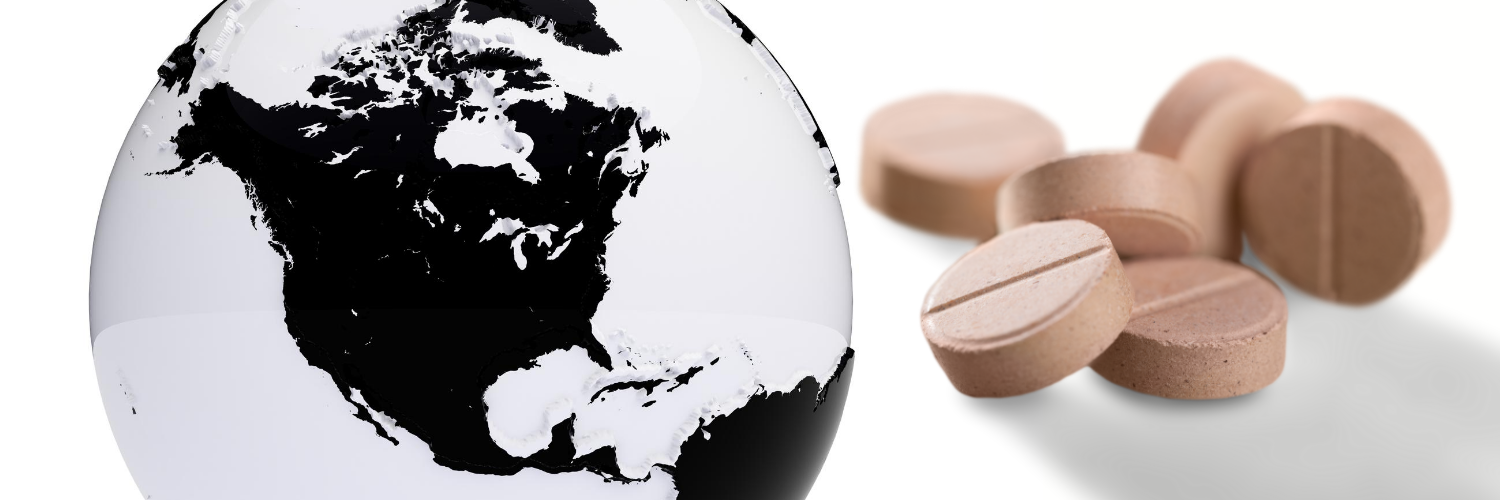3 Key Observations When Inspecting Indian Pharmacies for Patient Safety

Online pharmacies provide life-saving cost savings to millions of people across the globe. Surprisingly, the need for affordable access is particularly pronounced in one of the world’s richest countries: Per capita spending on prescription and OTC drug products in the United States (U.S.) is two to three times more than that of other OECD member nations. High drug costs are a major obstacle to medication access in the United States, especially for some older adults taking multiple medications on a fixed income; therefore it’s no wonder millions of Americans have pursued safely obtaining more affordable prescriptions through importation, at times from international online pharmacies.
The notorious online pharmacy dispenses to Americans from Canada; however, these websites are increasingly working with dispensing partners in India. It’s my job to ensure online pharmacy dispensing partners, no matter where they are located, adhere to the highest standards of patient safety.
PharmacyChecker International Pharmacy Verification Program (IPVP) standards require partner dispensing pharmacies in India to be subject to annual onsite inspections to protect patient safety. These inspections are part of PharmacyChecker’s larger mission to protect public health across the globe, by helping patient-consumers, their caregivers, and healthcare providers find information about safe online pharmacies that sell affordable medicines.
In my role as Director of the International Pharmacy Verification Program, I recently conducted onsite inspections of pharmacies located in Delhi and Nagpur. In this Ask PharmacyChecker article, I will detail some of my observations during those inspections.
1. Indian Pharmacies Inspected by PharmacyChecker Ensure Authenticity and Appropriateness of Prescriptions
During an onsite inspection in New Delhi, the day began with observing the dispensing process. The dispensing process is how pharmacies fill prescription order requests for patients.
When you shop for a prescription through an accredited online pharmacy, they may have dispensing pharmacy partners located in several countries, such as Canada, Australia, New Zealand, Turkey, Mauritius, the UK, the United States, and/or India. An online pharmacy accredited by PharmacyChecker is required to disclose the dispensing country to customers. Let’s say you order a prescription drug with India listed as the dispensing location. That drug order would be sent to one of the dispensing pharmacies I inspect annually.
When the dispensing pharmacy in New Delhi received a prescription request from an accredited online pharmacy, a licensed pharmacist immediately checked the authenticity of the prescription. This means that they verified the prescription came from a licensed prescriber and that the prescription was not expired. The pharmacist also ensured that the prescription had remaining refills.
When unavailable, the dispensing facility took time to ask the online pharmacy for the patient's medical history to check several items, including allergies and interactions. Moreover, the pharmacist reviewed the appropriateness of the prescription — like the dose, directions, duration, etc. If necessary, the dispensing pharmacy also requested assistance with patient and prescriber consultation for any concerns, such as drug interactions.
2. Indian Pharmacies Strive for Patient and Drug Safety
In addition to filling orders, the PharmacyChecker IPVP requires dispensing pharmacies in India to achieve high standards in other quality measures regarding patient and drug safety. For example, secure storage of patient information is important. So, the dispensing facility has security measures in place to limit electronic and physical access to this information. After physical records are no longer necessary, the pharmacy also properly destroys the paper copies.
Storage of Medications
The storage environment of medications is another important standard, and I am happy to report that medications were filled in a clean environment with adequate lighting. The prescription stock was carefully placed in cabinets off the floor and with protection from light and temperature extremes. The dispensing facility did not process any controlled medications. They also kept daily cleaning, temperature, and humidity logs.
Quarantined Medications
The pharmacy staff had a separate quarantine section for unusable medications — like ones that are damaged, expired, or returned. The dispensing facility also works with wholesalers to have a recall procedure in place. Once a wholesaler forwards a recall notification to the pharmacy, the staff places the recalled medication in the quarantined area.
Differences in the Packaging of Medications: India vs. the United States
During my visit to India, I was most surprised by how prescriptions are packaged when compared to the U.S. In the States, pharmacies usually receive bottles of medications. Some are large-count bottles — with hundreds or thousands of tablets — that the staff will count out and transfer into smaller amber bottles.
In India, the manufacturers package the medications in blister (bubble) packs, and these blister packs are packaged into a small box for dispensing. Although I am more familiar with the amber bottles, blister packs have their advantages from a safety standpoint. According to an FDA guidance document, blister packs may help decrease medication errors. Furthermore, blister packs may increase adherence to medications.
Related: Do international pharmacies make medication errors like in the U.S.? Blister Packs vs. Loose Pills
Labeling of Medications
When the pharmacy staff fulfilled a prescription order, they matched the product up by name, strength, and the product batch number. They also ensured an appropriate expiration date before placing a pharmacy label on the product. The pharmacy label contained similar information to U.S. pharmacy labels, such as the patient name, medication name, strength, quantity, directions, prescriber name, and pharmacy info.
After product labeling, the licensed pharmacist performed a final verification. This means that they make sure everything matches up, including the correct patient, product, quantity, directions, etc.
Shipping of Medications
When final verification is complete, the dispensing pharmacy carefully packages the prescription product to prevent damage while shipping. The shipping container also included some paperwork — like the invoice and a copy of the prescription for patients to refer to and check. Patients can use the return address and other contact information to reach out to the pharmacy.
Ordering of Medications
In addition to the above measures, Indian dispensing facilities must exhibit compliance with PharmacyChecker policy 16-05 Marketing/Dispensing Indian Pharmaceutical Products Internationally. This means that the pharmacy must only order medications manufactured by Approved Global Manufacturers. By following this policy, the pharmacy strives to dispense safe and quality products.
The National Bureau of Economic Research had a working paper with an audit to test samples of brand-name medications from U.S. and international websites. According to the paper, some uncertified online pharmacies did not pass the quality test. On the other hand, 100% of PharmacyChecker-accredited websites passed the quality test, which is on par with U.S. websites.
3. Indian Pharmacies are Committed to Quality Improvement
When interacting with the dispensing facilities in India, I found that they were very open to feedback to quickly make any corrections. The pharmacy staff were not afraid to ask questions and find ways to improve. The pharmacies also had continuous quality improvement (CQI) processes in place. This helped them identify and document errors and near-misses — with a regular plan to address these issues.
Takeaway
The global spending on medicines is high with an expected annual increase rate of three to six percent — with Americans currently bearing the brunt of high prescription drug costs. Consider PharmacyChecker if you would like reliable savings information, rooted in transparency, including ways to save money domestically. Compare prices before assuming international online pharmacies are the cheapest option.
Based on my observations during onsite inspections, dispensing facilities in India show a commitment to quality improvement. Available data also supports that PharmacyChecker-accredited pharmacies are held to high standards when it comes to drug safety.




